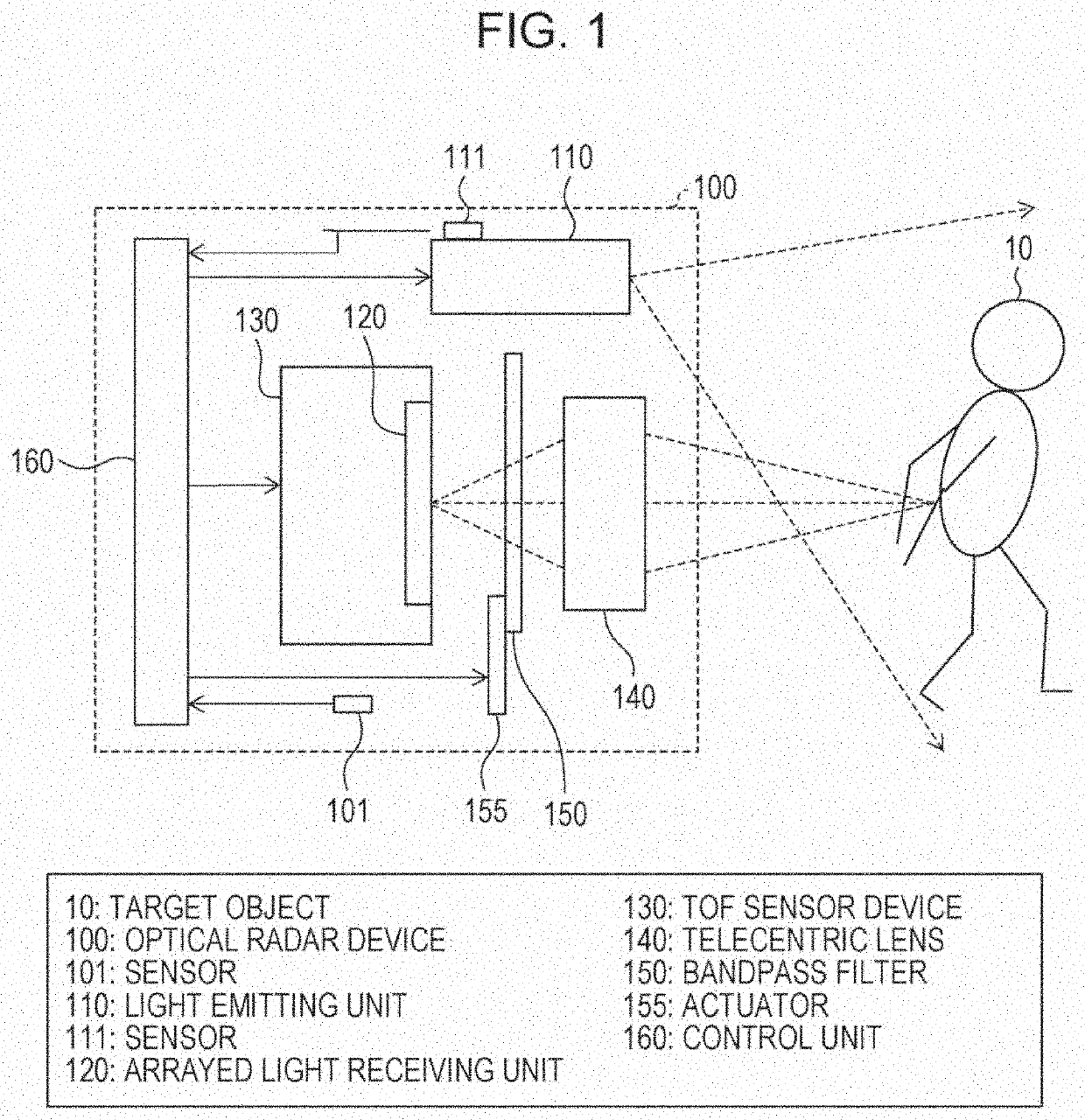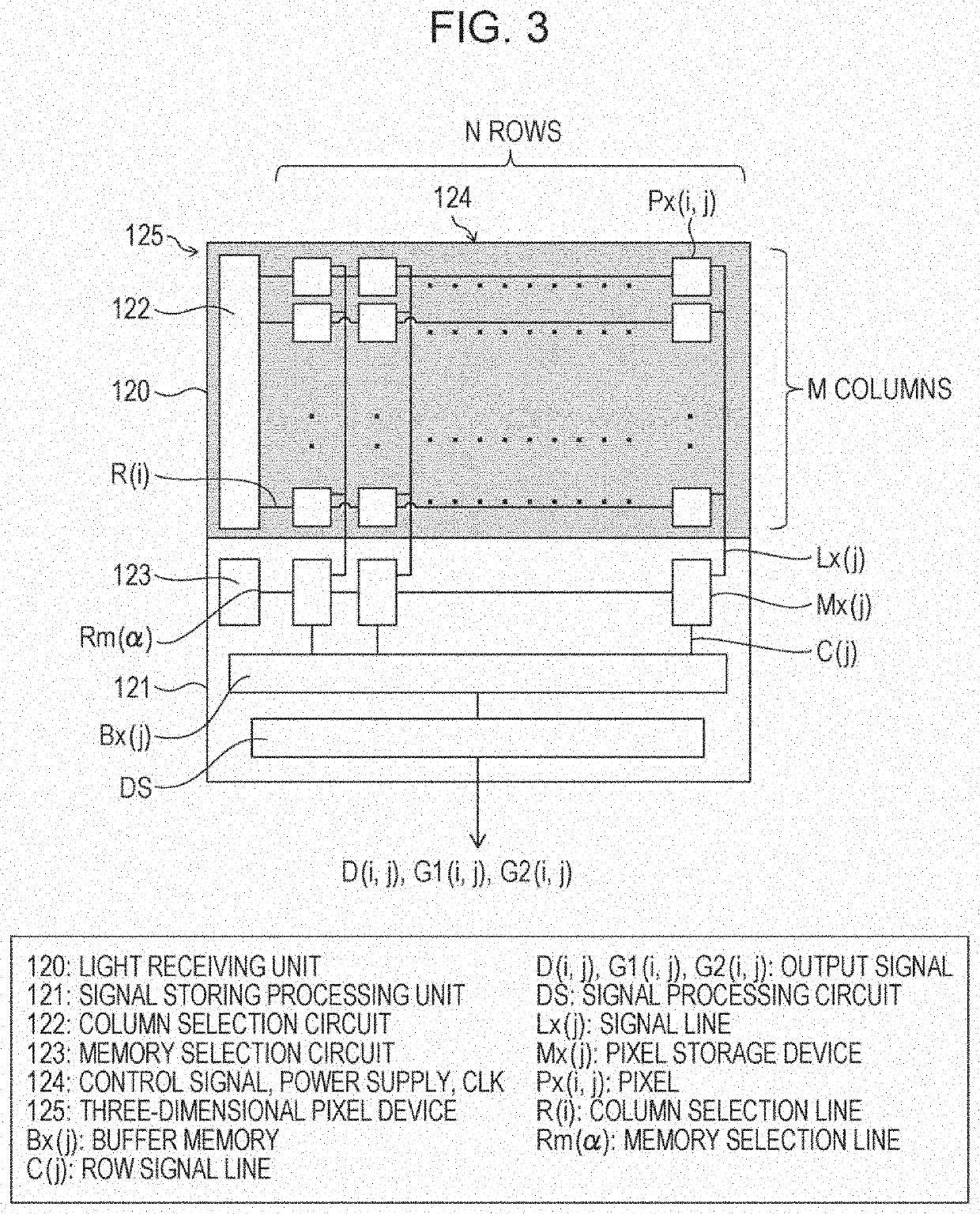Optical radar device
a radar device and optical technology, applied in the direction of measurement devices, instruments, telescopes, etc., can solve the problems of large-scale and expensive mechanical systems for scanning targets with laser beams, emitted laser beams of weaker intensity, and distance measurement accuracy degradation, etc., to achieve a wide incidence-angle range
- Summary
- Abstract
- Description
- Claims
- Application Information
AI Technical Summary
Benefits of technology
Problems solved by technology
Method used
Image
Examples
embodiment 1
[0054]An embodiment of the present invention will be described as follows. Hereinbelow, for illustration purposes, components having the same functions as the components described in a specific embodiment may be denoted with the same reference signs without being described.
(Related Components of Optical Radar Device)
[0055]FIG. 1 is a block diagram of related components of an optical radar device 100 according to the present embodiment. As illustrated in FIG. 1, the optical radar device 100 includes a light emitting unit 110, a light receiving system, and a control unit 160, which controls the light emitting unit 110 and the light receiving system. The light emitting unit 110 diffusively radiates laser beams on an object whose range is to be determined (referred to as a “target object”, below), including a movable target, such as people and animals, and an immovable target, such as buildings and trees. In the present application, as illustrated in FIG. 1, a person 10 is described as ...
modification example of embodiment 1
[0078]Embodiment 1, in which the telecentric lens 140 and the interference bandpass filter 150 (regardless of whether it has its transmissive wavelength range adjustable) are used in combination in flash LiDAR, has been described thus far. However, the present application is not limited to Embodiment 1.
[0079]For example, in flash LiDAR, the telecentric lens 140 may be used in combination with an interference bandpass filter having its transmissive wavelength range adjustable.
[0080]As described above, the present modification example differs from Embodiment 1 only in that the interference bandpass filter in the present modification example has its transmissive wavelength range adjustable.
(Interference Bandpass Filter Capable of Adjusting Transmissive Wavelength Range)
[0081]Regardless of scanning or flash LiDAR, an infrared semiconductor laser is used as a light source by pulse driving. The peak value of the oscillation wavelength of the semiconductor laser changes due to causes such ...
embodiment 2
[0109]Another embodiment of the present invention will be described, below. For illustration purposes, components having the same function as the components described in the embodiment are denoted with the same reference signs without being repeatedly described.
[0110]Thus far, Embodiment 1, in which the telecentric lens 140 and the interference bandpass filter 150 (regardless of whether it has its transmissive wavelength range adjustable) are used in combination in flash LiDAR, and a modification example of Embodiment 1, in which the telecentric lens 140 and the interference bandpass filter 150 having its transmissive wavelength range adjustable are used in combination in flash LiDAR, have been described. However, the present application is not limited to Embodiment 1 and the modification example of Embodiment 1.
[0111]For example, an interference bandpass filter having its transmissive wavelength range adjustable may be used also in scanning LiDAR.
[0112]FIG. 2 is a block diagram of ...
PUM
 Login to View More
Login to View More Abstract
Description
Claims
Application Information
 Login to View More
Login to View More - R&D
- Intellectual Property
- Life Sciences
- Materials
- Tech Scout
- Unparalleled Data Quality
- Higher Quality Content
- 60% Fewer Hallucinations
Browse by: Latest US Patents, China's latest patents, Technical Efficacy Thesaurus, Application Domain, Technology Topic, Popular Technical Reports.
© 2025 PatSnap. All rights reserved.Legal|Privacy policy|Modern Slavery Act Transparency Statement|Sitemap|About US| Contact US: help@patsnap.com



